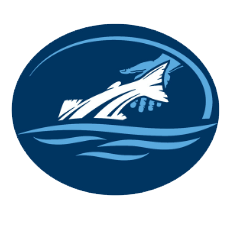
Conservation Initiatives
The Conservation Angler advocates for the protection and restoration of wild fish and the rivers and estuaries supporting them. Many factors adversely affect wild fish and some lay beyond our immediate control.
TCA focuses its multi-faceted advocacy on two we can control: harvest and hatchery management.
Harvest Reform
Pacific Northwest rivers, once the world’s largest producer of wild steelhead and salmon, are but shadows of their past abundance and diversity. The future can be different if we change how wild steelhead and salmon are treated by sport, commercial and tribal fisheries.
TCA is advocating for changes requiring river-specific management that will ensure wild spawning escapements are met, well documented, and achieved through conservative harvest regimes. TCA works with anglers and agencies to craft or reform harvest regimens to increase wild steelhead protection throughout their journey to and from their home rivers.
Hatchery Reform
Hatcheries have been widely used to produce steelhead and salmon for almost all Pacific Northwest fisheries for decades. Scientific research documents that hatcheries have not and will never adequately replace wild steelhead - and that large-scale hatchery production is incompatible with, and detrimental to, healthy wild fish populations.
TCA works to reduce the number of hatchery fish spawning in the wild, and eliminate hatchery programs altogether in watersheds where habitat conditions can support robust wild fish populations. TCA also works to ensure that post-dam-removal reintroduction programs prioritize wild fish.
Read a concise summary of hatchery impacts on our Blog

Recent and Ongoing Projects
Columbia and Snake River Wild Fish Restoration
Wild steelhead returning to the most prolific steelhead and salmon river on the west coast run a gauntlet as they return home.
One obstacle we can ease or remove is harvest. TCA’s goal is to reduce the encounter rate on wild steelhead by protecting refuge areas and reforming fishing regulations along the way. Catch and release – by itself – is not enough to protect wild steelhead bound for rivers such as the Wind, Klickitat, Deschutes, John Day, Wenatchee, Clearwater, Snake and Grand Ronde.
Washington Wild Steelhead Protection Initiative
TCA works with conservation and fishing organizations to ensure Washington follows sound scientific principles as it designates watersheds as genetic management zones.
Our Initiative is comprised of region-specific projects on wild steelhead rivers on the Olympic Peninsula, in Puget Sound, and throughout the Columbia and Snake Basin that will increase our knowledge about status and spur action to protect future health and productivity. TCA also works closely with the Wild Fish Conservancy and other organizations to reduce and reform the adverse effects of hatcheries throughout Washington’s wild steelhead rivers.
Willamette Basin Hatchery Reform
The Willamette is Oregon’s largest watershed and home to wild spring chinook, winter steelhead and numerous wild trout populations.
However, its productivity has been hamstrung by 14 flood control and hydroelectric projects and failing mitigation efforts. TCA is working alongside other conservation groups to reform flow regimes and remove harmful hatchery programs.
Columbia and Snake River Hatchery Reform
The multiple salmon and steelhead hatcheries along the Columbia and Snake Rivers are the product of agreements to trade free-flowing rivers for hatchery fish.
These hatcheries represent a failed promise – a promise made before we understood that hatcheries would fail to replace wild steelhead and salmon. TCA is working to reform the mitigation requirements authorized by multiple dams and hatchery-building boondoggles.







